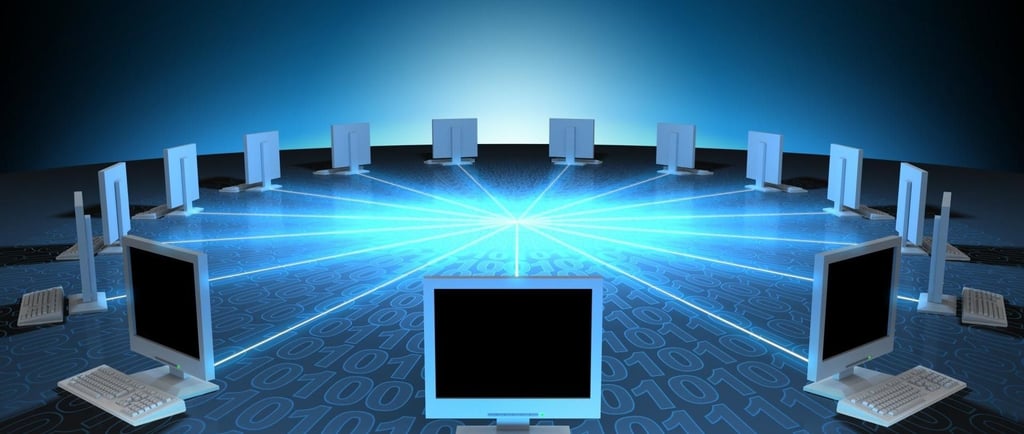Fundamentals of Networking: An Overview of Network Types, Operating Principles, and the OSI & TCP/IP Models
This article provides a detailed explanation of what networking is, including its main types, operating principles, and the widely used OSI and TCP/IP models. It also examines the key components of a network and their functions, offering a clear presentation of the topic for both beginners and professionals.
Ilgar Hasanof
6/11/2025


What Is a Network?
A network is the interconnection of two or more devices that communicate with each other to exchange data.
The Essence of Networking
Simply put, a network is a system in which two or more devices (such as computers, phones, printers, etc.) are connected to enable data exchange. Networks allow for faster data transmission, resource sharing, and interaction between different devices. From internet access in our homes to resource sharing in office environments, networking plays a vital role in everyday life.
Types of Networks
Networks vary based on size and purpose, and are generally categorized as follows:
PAN (Personal Area Network): A small-scale network that connects personal devices within a limited area. It typically includes interactions between mobile devices, laptops, wireless peripherals (like mice and keyboards), and Bluetooth systems within a user’s vicinity.
LAN (Local Area Network): A network set up in a limited area such as a home or office. Devices in a LAN can communicate with each other at high speeds.
WAN (Wide Area Network): A large-scale network that spans across cities, countries, or even continents. The Internet is the most prominent example of a WAN, enabling global connectivity.
MAN (Metropolitan Area Network): A network that covers a city or large urban area. It is broader than a LAN but smaller than a WAN in terms of geographic scope.
How Networks Work
Data transmission over a network follows specific rules known as protocols. These protocols define how data is sent, received, and how errors are handled during communication.
OSI and TCP/IP Models: Structural Understanding of Networks
OSI Model
The Open Systems Interconnection (OSI) model was developed in 1984 by the International Organization for Standardization (ISO). It provides a framework that standardizes the functions of a telecommunication or computing system into seven distinct layers:
Physical Layer – Deals with the physical transmission of data (cables, signals).
Data Link Layer – Handles the reliable transfer of data frames and error detection.
Network Layer – Manages routing and addressing of data (e.g., IP addressing).
Transport Layer – Ensures reliable delivery of data (e.g., using TCP).
Session Layer – Establishes, maintains, and terminates communication sessions between devices.
Presentation Layer – Manages data encoding, encryption, and compression.
Application Layer – Interfaces directly with end-user software (e.g., browsers, email clients).
TCP/IP Model
Unlike the OSI model, the TCP/IP (Transmission Control Protocol/Internet Protocol) model is more practical and widely used in real-world networking. It originally consists of 4 layers:
Network Interface Layer – Combines functions of the physical and data link layers.
Internet Layer – Manages logical addressing and routing between networks (IP).
Transport Layer – Ensures end-to-end communication and data reliability (TCP, UDP).
Application Layer – Supports network services and applications (HTTP, FTP, SMTP, etc.).
In practice, a 5-layer version of the TCP/IP model is commonly used today:
Physical Layer
Data Link Layer
Network Layer
Transport Layer
Application Layer
Core Network Components and Their Functions
Router – Directs data packets between networks and provides internet access to devices.
Switch – Connects devices within a local network and efficiently routes data to the correct destination.
Access Point – Enables wireless (Wi-Fi) connectivity and facilitates communication between wireless devices.
Modem – Converts digital data into signals suitable for transmission over ISP lines, and vice versa.


